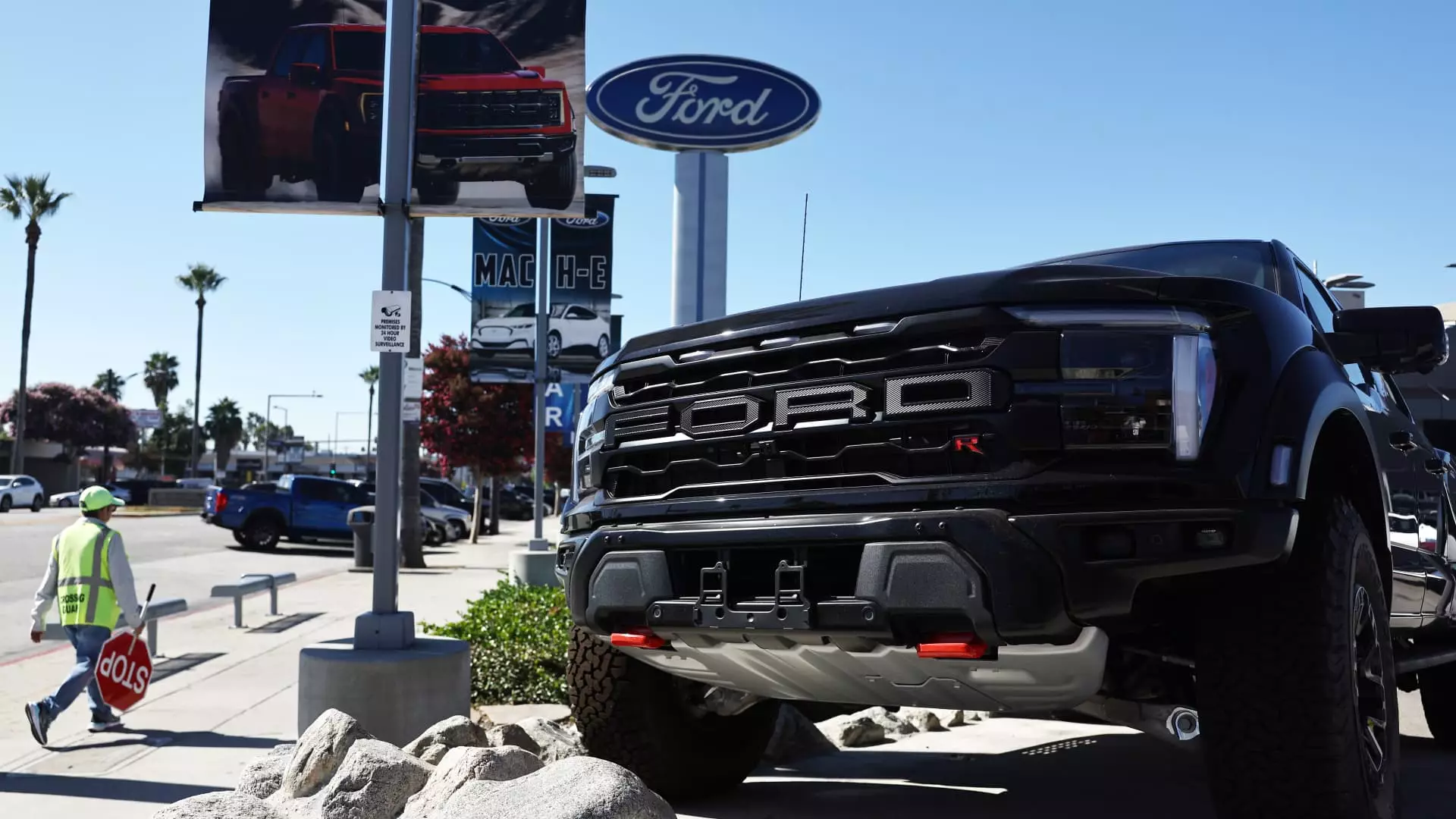In an economic landscape fraught with uncertainty, Ford Motor Company recently made a move that encapsulates both the audacity and desperation of a major automaker trying to navigate the murky waters of President Donald Trump’s impending 25% tariffs on imported vehicles. Rather than merely adjusting operational strategies, Ford decided to launch an employee pricing program dubbed “From America, For America.” On the surface, this initiative appears to be a commendable effort to bolster U.S. sales during a tumultuous time. However, digging deeper unveils a myriad of complexities that speak to the overall instability pervading not just the automotive industry, but the broader economy as well.
The decision to introduce such a program seems, at a glance, a savvy marketing ploy aimed at emphasizing Ford’s commitment to American jobs and production. Yet the reality of selling vehicles at or even below invoice prices raises significant questions regarding the sustainability of this approach. A critical examination unearths the financial strain that will be placed on dealers, subverting the strategy’s intended effect and leaving retailers scrambling to maintain profitability amidst the backdrop of rising tariffs and consumer anxiety.
Opportunity Amidst Chaos
Ford’s latest pricing strategy can simultaneously be viewed as a beacon of hope and a desperate act of survival. With a hefty inventory resulting from previous declines in sales, Ford has found itself flush with cars that need to move off the lot. By leveraging the current environment, which has spurred consumer urgency to purchase before tariffs escalate prices, Ford seeks not just to offload vehicles but to transform chaos into competitive advantage.
Industry analysts suggest that such bold moves are a calculated response to capitalize on the moment. By positioning themselves as a consumer-friendly alternative, Ford can attract new buyers while preserving a certain level of market share in the face of declining numbers. It’s almost poetic to think that these times of unrest, supposedly damaging to American businesses, could paradoxically foster innovation and create new sales channels. Yet, is this a sustainable roadmap forward? The answer may lie in the overarching economic context, which many analysts describe as precarious at best.
Race to the Bottom or Strategic Resilience?
The juxtaposition of Ford’s pricing strategy with the overall market conditions is certainly telling. Its success has bred imitation; rivals like Stellantis and Hyundai are following suit with similar employee pricing programs and price freezes. Although it may appear that companies are uniting to challenge impending tariffs and alleviate consumer worries, one must wonder if this trend represents a healthy competitive landscape or a dangerous race to the bottom.
While the demand for vehicles surged unexpectedly in anticipation of the tariffs, it’s a risky bet to assume that current consumer enthusiasm will persist. Amidst talk of rising recession risks—J.P. Morgan recently increased the improbability of avoiding economic downturn to 60%—it becomes crucial for Ford and its peers to tread carefully. Once the fervor of the immediate crisis subsides, will consumers feel emboldened enough to spend heavily on new vehicles, or will they retreat into a more cautious mindset, awaiting clearer economic signals?
The Broader Implications
The actions of Ford and its competitors could unravel into a larger commentary on how corporations navigate and adapt to governmental policy. Rather than catering solely to shareholders’ whims, car manufacturers now find themselves grasping for ways to serve their communities and the broader society while preserving business continuity. This represents a meaningful shift in corporate ideology and speaks to the increased awareness of social implications within the business realm.
However, amidst this potential paradigm shift, the risk of consumer exploitation cannot be ignored. Although Ford’s discount initiatives may provide immediate relief, they build an economically precarious foundation that churns out unsustainable practices. These carmakers may find themselves torn between serving customers and safeguarding their long-term viability. After all, if dealers strain under the weight of low margins, the entire network of support could crumble, ultimately harming consumers in the long run.
The interplay between macroeconomic forces, local dealership realities, and evolving consumer behavior makes for a compelling yet convoluted scenario. While Ford should be commended for its boldness, one must ponder if this is merely a reactive approach to a deeply ingrained systemic issue rather than a proactive solution. Only time will tell whether this gamble will pay off or simply serve as a temporary Band-Aid in an era of escalating economic turbulence.

